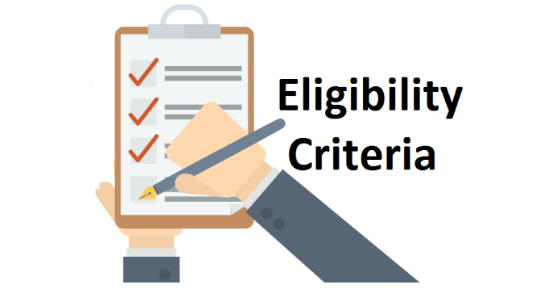PF Registration
To provide financial stability and security to employees when they are temporarily or no longer fit to work, the Parliament enacted the Employee’s Provident Fund Scheme (EPFS) 1952. The central government trust manages these funds, and employees are require to contribute a part of their salary to it every month during their employment tenure.
Employee’s State Insurance (ESI) is a self-financing scheme for Indian workers which covers health insurance and social security. ESI functions as an independent corporation and comes under Ministry of Labor and Employment in India. The ESI Corporation thus manages the funds which regulated by the guidelines and regulations of the ESI Act,1948. This act monitors the provision of cash and medical benefits to employees and their families through their comprehensive network of hospitals and dispensaries throughout India.
ADVANTAGES
EMPLOYEE PROVIDENT FUND
Employee Provident Fund is a very important tool of retirement planning. The tax free interest (compounding) and the maturity ensures a good growth of your money. If continued for a very long term, it can help immensely in meeting ones retirement goal. But while fulfilling other goals or during emergencies, we fall short of funds even after taking all recourse and do force borrowing. At this moment EPF can be helpful due to certain benefits it provides which most of us are unaware of.
Here are some of these which every subscriber should know-
- Insurance Benefit.
- PF Entitles for Pension Too.
- Marriage, Education need for self, child or any sibling.
- House construction, repair or maintenance or for housing loan repayment.
- Medical Emergency.
Get Expert Assistance
Start-up Registration
Documents Required
Name of the company.
Date of the setup of the organization.
Scanned copy of the company’s PAN (Proprietor’s, in case of proprietorship concern).
Scanned copy of the licenses available in the name of the company. (like GST).
Scanned copy of cheque of company’s bank account.
Address of the company with address proof.
List of Directors / Partners.
Address proof of Proprietor / Director / Partner of the company.
Email address, Mobile number of Proprietor / Director / Partner of the company.
Copy of First sale bill / Job work bill and First purchase bill.
The monthly strength of employees from the date of setup.
Current list of employees with their details:
Name
Father’s Name
Date of joining
Date of birth
Mobile number
Postal address
Name of nominee
Grade
Salary
Designation
ID proof (Aadhaar and PAN)
Bank A/c number with IFSC code
Digital Signature of the Proprietor / Director / Partner.
DUE DATES
Payments: 15th of every month
Returns: 25th of every month

ELIGIBILITY

Registration for PF / ESI is compulsory for the companies / organizations who employ more than 20 individuals. Also, small organizations which do not have the minimum strength can register themselves voluntarily. Organizations which grow to a strength of 20 members are expected to register themselves within one month of attaining the minimum strength.
Process
A DETAILED APPLICATION
A Detailed Application Form Called 'Performa Of Coverage' And Form 5A With Annexure 1 Has To Filled While Registering The Company Online.
AFTER THAT, A TEMPORARY PF REGISTRATION NUMBER ALLOTTED
After That, A Temporary PF Registration Number Allotted, And An Employer Has To Submit All Concerning Documents Online.
AFTER THAT, THE PF AUTHORITIES CARRY OUT
After That, The PF Authorities Carry Out An Inspection Of The Premises And Verify The Documents Submitted Online.
ONCE THEY ARE SATISFIE
Once They Are Satisfie, A PF Allotment Letter Will Grant.
FREQUENTLY ASKED QUESTIONS
Yes, you can opt out of EPF scheme if your monthly salary (basic+DA) is more than 15,000, but you have to decide it before becoming the member of EPF. Once you become a PF member, you can’t leave it till you are in the job.
Yes you can join EPF any time before the retirement. There is no such restriction.
It is not possible without the employer. The contribution towards employer is the must for EPF.
No, Every new employee gets the Universal Account Number. This number is portable and works with any job. You can quote the existing UAN to the new employer. It will make your PF membership portable. The PF balance from the previous company also gets transferred through the UAN.
- Today, EPFO asks UAN for every interaction with it. EPF membership, transfer, withdrawal and even complaint can’t be lodged without the UAN.
- Normally, the EPFO issues UAN for all of the active members. The employers have to distribute this number to its employees. But, an employee can also check its UAN status through the UAN portal. It requires the PF member ID to reveal the UAN.
- Besides this one can get UAN even before getting the job. This UAN can be mentioned at the time of joining a job.
- The EPF is constituted mainly for the low income worker. This class of worker is not very aware about the retirement saving. This forced saving builds a decent retirement corpus. Therefore, people who earns more than Rs 15000/month are free to opt out of EPF.
- However, the terms and condition of EPF make it restricted saving. Because of the restriction, this saving lasts till the retirement. Whereas, other saving can be spent before the retirement. Also, the EPF investment is very secure and cheap saving plan.
Minimum 10 years eligible service will entitle for member pension
Yes. It gets transferred automatically along with the EPF.
Yes, an EPF member can increase his EPF contribution up to the 100% of the salary. But an employer is not bound to match the amount beyond 12%. Also, if an employer increases its contribution beyond 12%, the additional amount would be taxable.
If an employer is not signing the EPF withdrawal application. You have two ways to proceed.
- Use the new for of EPF withdrawal and submit it directly to the regional EPF office. For this method, you should have activated UAN and approved KYC.
- Fill the EPF withdrawal form yourself and get it attested from the gazetted office or bank manager.
